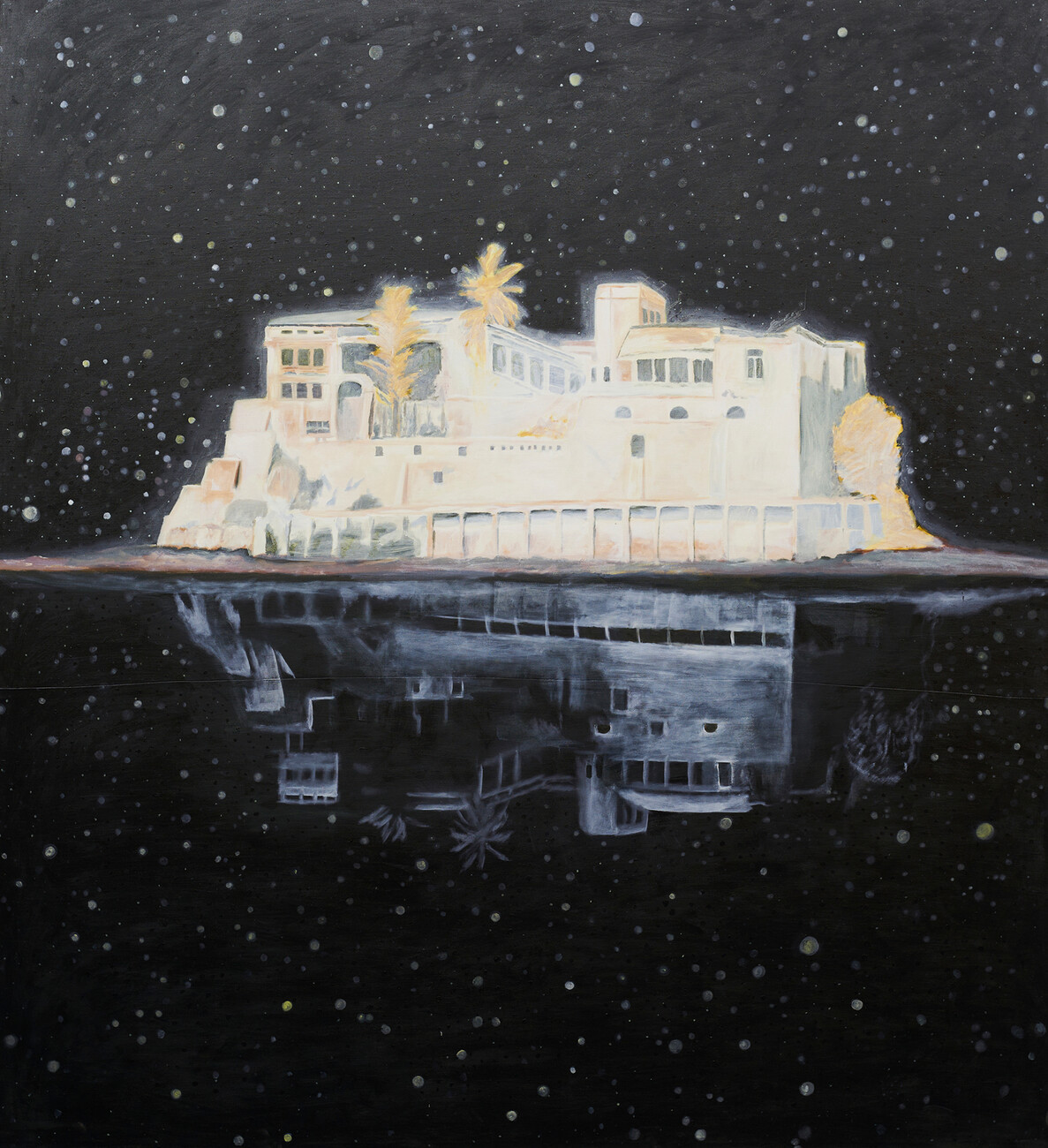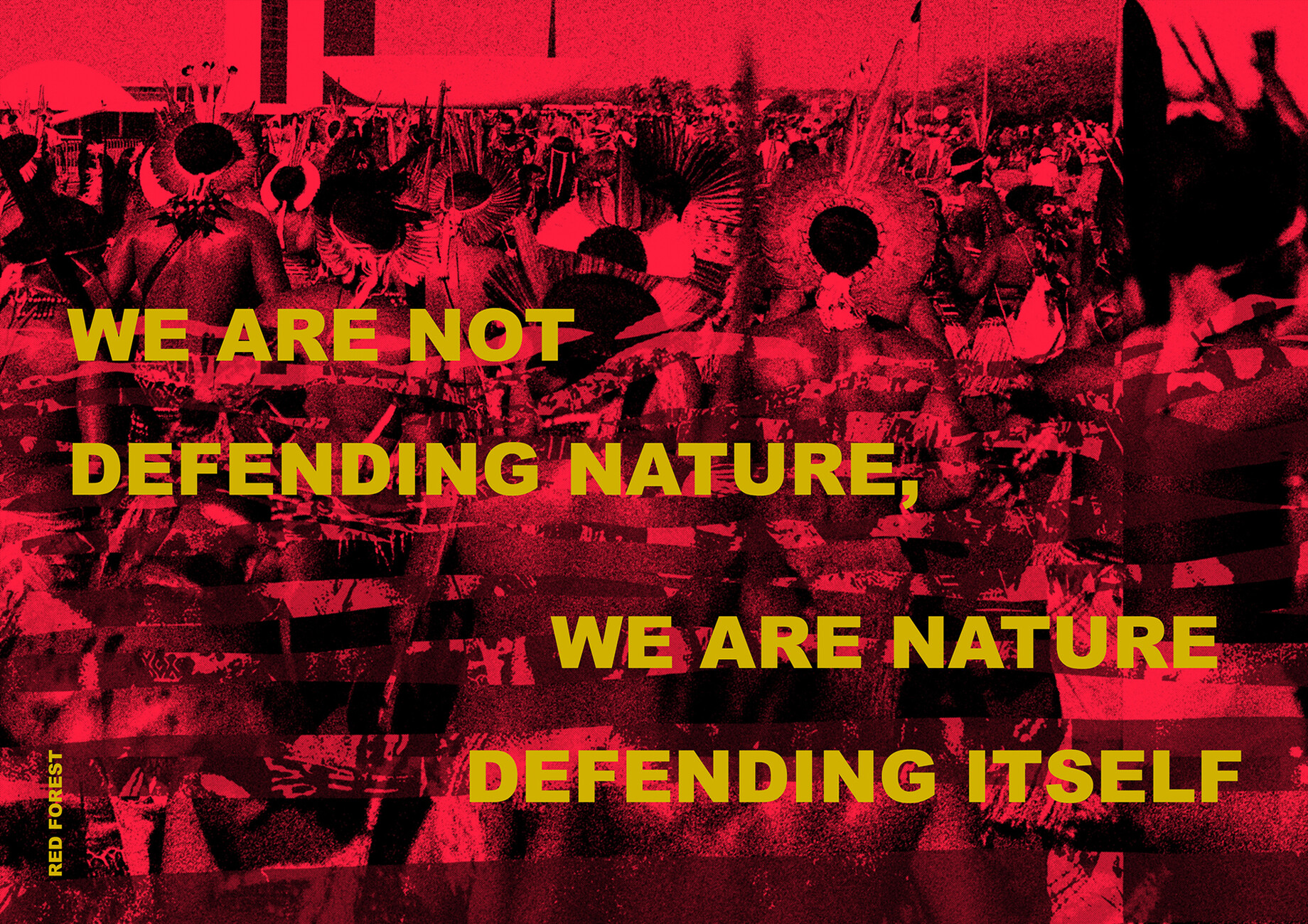Foreign worlds
Anna Moldenhauer: "Unknown Unknowns" deals with the unknown – ranging from construction technologies for Mars and the Moon by the architecture firms BIG and SOM, to a 40,000-fold magnified amoeba by artist Sonja Bäumel illustrating our direct connection to the microbial world, to a data sculpture by Refik Anadol. What criteria did you use to choose the contributions?
Ersilia Vaudo: Unknown Unknowns is divided into paths whose boundaries are deliberately blurred and permeable. Its interdisciplinary approach brings into play a variety of works, projects and installations by international artists, architects, researchers and designers who are confronted with the unknown, the Exhibition involves intimate perspectives and greater reflections on the unknown. With the selected works, I have been careful in avoiding simplifications or a stereotype of the concept of the unknown as an antagonist of what we actually know. Rather, I wished to create an environment inducing an inedited curiosity in the audience, opening up to different perspectives but never leaving behind the essence of who we are. We worked on four special commissions that we handed to Yuri Suzuki, Irene Stracuzzi, the architects' and designers’ collective SOM, and Refik Anadol, who have the opportunity to go further in their ongoing research and present them in the thematic exhibition. Moreover, the show includes a series of site-specific installations and four Listening Chambers, spaces in which sound becomes spoken words, and visitors can abandon themselves to the narrations of leading figures from the world of science. A special installation curated by the European Space Agency (ESA) ends this theme-based event with a surprising view of the Earth, a far-off gaze turned toward ourselves.
Many of the contributions show a strong connection to mathematics. How can mathematics help us to understand the unknown?
Ersilia Vaudo: Mathematics allows us to expand our knowledge where our senses tend to block it, by giving us the illusion that something is real only if we can hear it or see it. Mathematics is a language that opens new realities and that stems from our intellectual abilities leading us to worlds that we would not have the chance to visit otherwise. For example, it can deliver us fragments of reality still unimaginable or not yet imagined, as in the case of the Paul Dirac equation which brought out the existence of antimatter and which, only later, physicist Carl David Anderson observed for the first time. Using a cloud chamber to measure cosmic rays Anderson noticed a trace similar to that of an electron but with specular curvature. After verifying his discoveries mathematically, he deduced that it was a counterpart of the electron, with the same mass and the same characteristics, but with a positive electric charge and he called it a "positron". This discovery of an antiparticle earned Anderson the Nobel Prize in 1936. That image has an extraordinary power to me: a thin trace on a gray background that opens up reality to new worlds. Mathematics is one way into the unknown unknowns.
Architect and Pritzker Prize winner Francis Kéré has designed "The Future's Present" tower, which stands directly in front of the entrance to the Triennale, as well as two sculptures inside. He also curated the participation of six African countries as part of the international participation. How can I imagine your collaboration?
Ersilia Vaudo: The project for the 23rd International Exhibition started from the very beginning as a multi-connected collaboration, as a constellation of different people coming together from different backgrounds and realities to be a part of a bigger project. This group dimension was fundamental to create the best synergies for the Exhibition, and particularly with Francis Kéré who brought a different perspective on Africa. Our projects as main curators were oriented in the same direction, meaning to shake the common knowledge, to change perspectives over what we consider real or familiar, to spark the public’s creativity and curiosity. Both our efforts were focused on telling stories from a different point of view.
Exploring the unknown is appealing and allows for many perspectives, but it also often seems threatening in its complexity. How can design, art and architecture help to make our world a little more understandable?
Ersilia Vaudo: About halfway into Unknown Unknowns, a display of different screens by SOM Studio, Decalogue for Space Architecture, portrays a list of the things and limits that future extraterrestrial architects will have to take into account when building for humanity in outer space. The project not only helps us consider what conditions we should recreate in order to build on a different surface other than the Earth, it also allows us to reconsider what we always thought as normal when it comes to building any space. SOM’s project lets us see how colorful buildings would have to be on the moon to prevent the lack of atmosphere from turning everything black and white. It shows us how important it would be to recreate gravity, since the absence of it would slowly reduce bone density and cause muscle atrophy. I am describing this project specifically since, like many other works in the exhibitions, it opens our minds to new possibilities, letting us see that our way of doing things is not the only way. It let us put into consideration alternatives to build, to live, to create, hence, to consider a completely different lifestyle we could have never imagined through our senses alone. That is why I think that the act of creating something through design, art or architecture could make our world maybe a little more understandable in its complexity and beauty.
Many of the works were designed especially for the 23rd International Exhibition, both for the "Unknown Unknowns" exhibition curated by you, which takes a look into outer space, and for "Mondo Reale", curated by Hervé Chandès, which focuses more on the unknown on our earth. Were there any guidelines for the creatives to follow?
Ersilia Vaudo: The 23rd International Exhibition is conceived as a great and plural constellation of exhibitions, installations, and projects. The concept at the core of the Exhibition stems from a dialogue with artists and creatives that were completely free to interpret the theme as they wanted. Triennale represented for them a chance to continue a project they were already working on, that is the case of Yuri Suzuki’s Sound of the Earth: Chapter 3, or that came from a dialogue with artists and curators, for examples when it comes to the musician and writer Francesco Bianconi’s Playing the Unknown installation, who translated into music its idea of the unknown, or Giovanni Agosti and Jacopo Stoppa’s Il corridoio rosso (The Red Corridor) exhibition, an idea thatwas born after my visit to Agosti’s house, whose structure perfectly gives the idea of a space full of mysteries. The lack of strict guidelines allowed this year’s Exhibition to transform its shape along the way and to build different layers of meaning over time, letting different creatives influence each other.
Unknown Unknowns
Until 11 December 2022
Triennale Milano
Viale Alemagna 6
20121 Milan
Phone: +39 02 724341




































